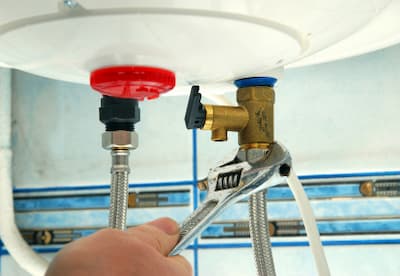Ensuring Longevity of Your Home's Hot Water System: Care Tips
Ensuring Longevity of Your Home's Hot Water System: Care Tips
Blog Article
This great article down below on the subject of How to Maintain a Hot Water Heater in a Few Simple Steps is immensely insightful. Don't overlook it.

Warm water is crucial for day-to-day convenience, whether it's for a rejuvenating shower or washing dishes. To guarantee your warm water system runs effectively and lasts longer, regular maintenance is vital. This write-up supplies functional suggestions and understandings on exactly how to preserve your home's hot water system to stay clear of disturbances and expensive repair work.
Introduction
Keeping your home's warm water system may seem daunting, yet with a few easy actions, you can ensure it operates efficiently for many years ahead. This guide covers everything from recognizing your warm water system to DIY upkeep ideas and knowing when to employ expert help.
Relevance of Preserving Your Hot Water System
Normal maintenance not just prolongs the lifespan of your warm water system however additionally guarantees it operates successfully. Overlooking maintenance can cause decreased efficiency, greater power bills, and also premature failing of the system.
Indications Your Warm Water System Requirements Maintenance
Understanding when your hot water system requires attention can stop major concerns. Look out for indicators such as inconsistent water temperature level, unusual sounds from the heating unit, or corroded water.
Flushing the Hot Water Heater
Flushing your hot water heater removes debris buildup, enhancing effectiveness and prolonging its life.
Checking and Changing Anode Rods
Anode rods protect against corrosion inside the storage tank. Inspecting and changing them when broken is important.
Facility Issues Calling For Professional Assistance
Instances include significant leakages, electrical issues, or if your hot water heater is regularly underperforming.
Regular Expert Upkeep Benefits
Expert upkeep can include complete inspections, tune-ups, and guaranteeing conformity with safety and security standards.
Checking and Readjusting Temperature Settings
Readjusting the temperature level settings makes sure optimum efficiency and safety.
DIY Tips for Upkeep
You can execute several maintenance jobs on your own to maintain your warm water system in leading condition.
Checking for Leaks
On a regular basis check pipelines and connections for leaks, as these can result in water damages and greater costs.
Understanding Your Hot Water System
Before diving into upkeep jobs, it's handy to recognize the basic components of your hot water system. Usually, this consists of the hot water heater itself, pipelines, anode poles, and temperature controls.
Monthly Maintenance Tasks
Regular monthly checks can assist catch minor problems prior to they rise.
Examining Stress Alleviation Valves
Examining the stress safety valve guarantees it operates appropriately and prevents excessive pressure buildup.
Shielding Pipelines
Shielding warm water pipelines minimizes warm loss and can conserve power.
When to Call an Expert
While DIY maintenance is valuable, some issues require specialist expertise.
Conclusion
Normal upkeep of your home's warm water system is necessary for effectiveness, durability, and expense savings. By following these tips and knowing when to look for specialist assistance, you can ensure a reliable supply of warm water without unanticipated interruptions.
How to Maintain an Instant Hot Water Heater
Before tinkering with your hot water heater, make sure that it’s not powered on. You also have to turn off the main circuit breaker and shut off the main gas line to prevent accidents. Also turn off the water valves connected to your unit to prevent water from flowing into and out of the appliance. 2. When you’re done, you have to detach the purge valves’ caps. These look like the letter “T†and are situated on either side of the water valves. Doing so will release any pressure that has accumulated inside the valves while at the same time avoid hot water from shooting out and burning your skin. 3. When the purge valves’ caps are removed, you have to connect your hosing lines to the valves. Your unit should have come with three hoses but if it didn’t, you can purchase these things from any hardware or home repair shops. You can also get them from retail stores that sell water heating systems. Read the user’s manual and follow it to complete this task properly. When the hosing lines are connected, open the purge port’s valves. 4. You should never use harsh chemical cleaners or solutions when cleaning your unit. Make use of white vinegar instead. It should be undiluted and you’ll probably use about 2 gallons. 5. Now flush your water heater. This task should probably take about 40 minutes. We can’t give you specific directions for this because the procedure is carried out depending on the type, model and brand of your heater. With that being said, refer to the user’s manual. 6. When you’re done draining the unit, you have to turn off the purge port valves again. Remove the hosing lines that you earlier installed on each of the water valves. Put the valve caps (purge port) back in their respective places and be very careful so as not to damage the rubber discs that are found inside these caps. 7. Now that everything’s back in place, check your user’s manual again to find out how to reactivate your water heating system. 8. Once it is working, turn one of your hot water faucets on just to let air pass through the heater’s water supply pipes. Leave the tap on until water flows smoothly out of it. https://www.orrplumbing.com/blog/2014/september/how-to-maintain-an-instant-hot-water-heater/

Do you appreciate reading up on Tips on Maintaining a Water Heater? Leave a short review down below. We'd be delighted to know your insights about this write up. In hopes that you come back again before long. Sharing is caring. Helping others is fun. Many thanks for being here. Don't hesitate to check our blog back soon.
Website Report this page